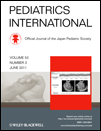Therapeutic strategies of meconium obstruction of the small bowel in very-low-birthweight neonates
Abstract
Background: Meconium obstruction without cystic fibrosis in low-birthweight neonates is a distinct clinical entity. We aimed to determine what therapeutic strategies work best in very-low-birthweight neonates with meconium obstruction of the small bowel under varied clinical conditions caused by the associated diseases of prematurity.
Methods: Medical records of very-low-birthweight neonates with meconium obstruction of the small bowel treated from 1998 to 2008 were retrospectively reviewed. Pre- and postnatal data, treatments, and clinical outcomes were assessed.
Results: Nine patients with perinatal complications were identified. Mean gestational age and birthweight were 26.9 weeks and 863 g, respectively. Abdominal distension developed from 1 to 7 days of life. Five patients were initially treated with Gastrografin enema, three of whom had successful outcomes. Two hemodynamically unstable patients failed to respond to Gastrografin treatment; they ultimately died of sepsis. The remaining four without Gastrografin treatment underwent enterostomy to resolve the obstructions with good results.
Conclusions: Gastrografin and surgical treatments should be appropriately selected based on the underlying pathologies of meconium obstruction of the small bowel. Therapeutic Gastrografin enema is effective, safe and repeatable; however, it is not recommended for hemodynamically unstable patients. Surgical intervention is reserved for those who develop rapid abdominal distension that risks perforation.




